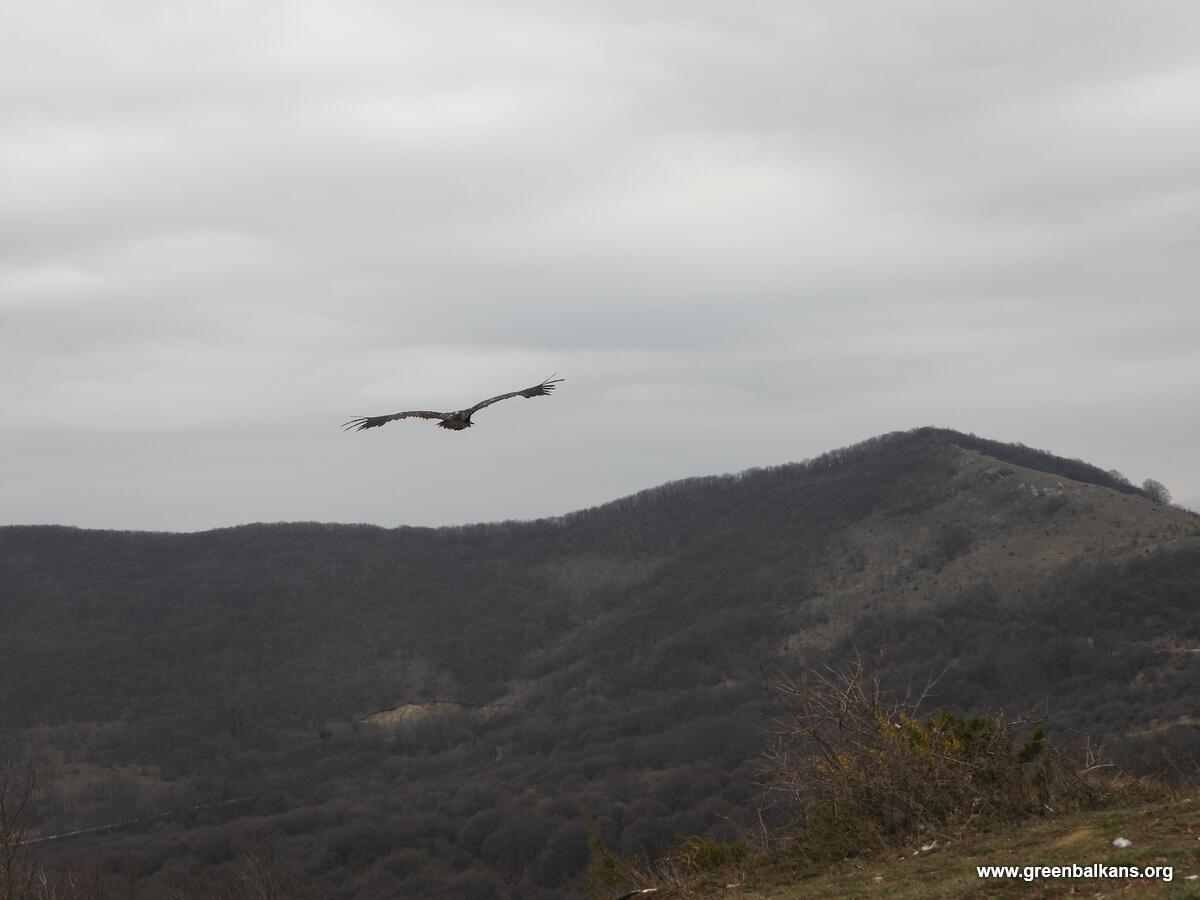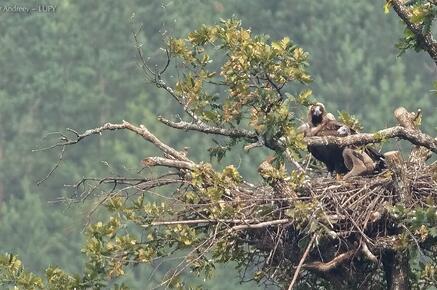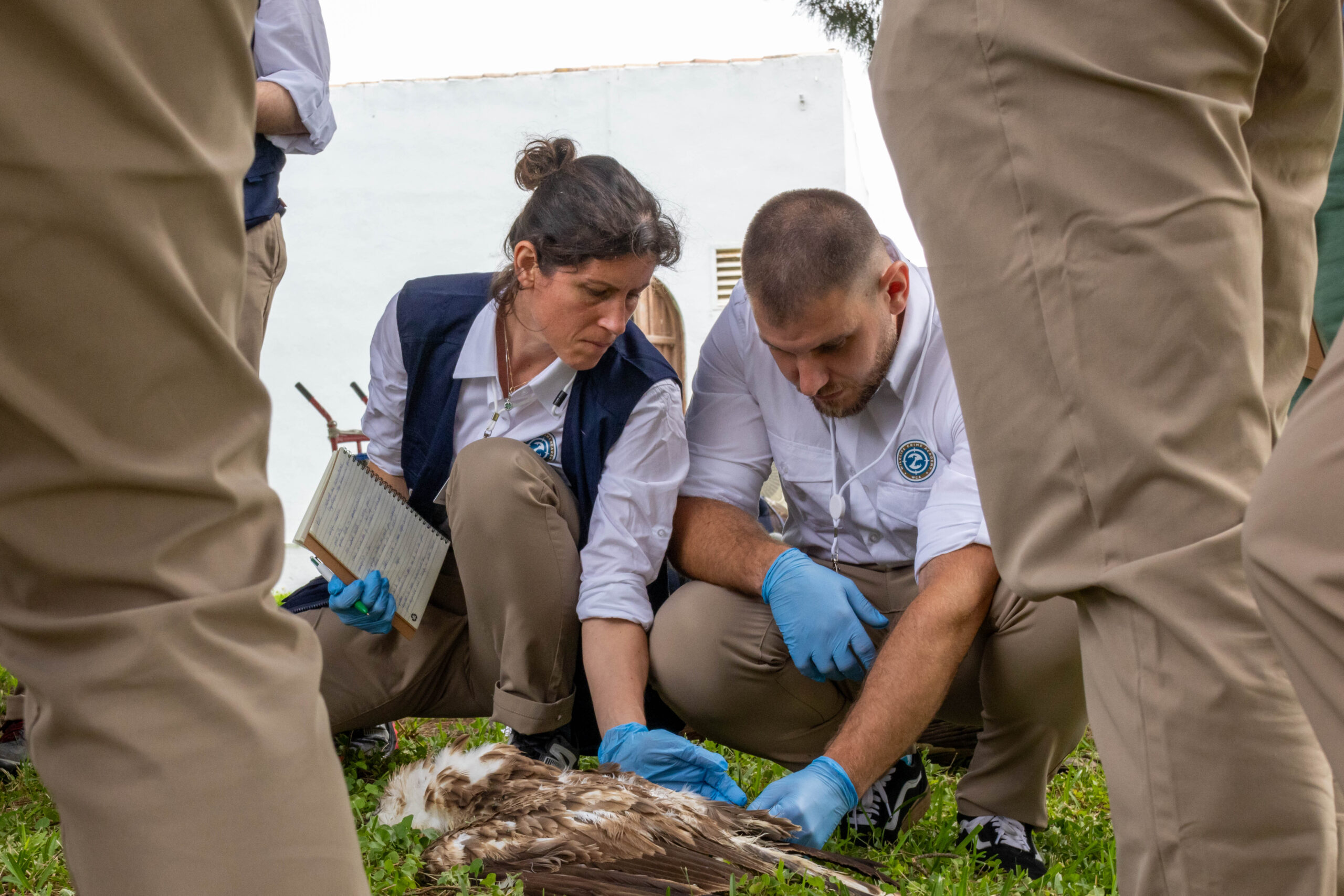
According to a paper recently published, a fledging Cinereous Vulture found dead in a nest in Catalonia, Spain, last September died due to veterinary diclofenac, a non-steroidal anti-inflammatory drug (NSAID) that is highly toxic to vultures, and that has been legally sold in Spain since 2013.
Post-mortem examination of this Cinereous Vulture revealed the bird died because of severe generalised visceral and articular gout caused by diclofenac intoxication. This case is the first of diclofenac poisoning in Spain (and in Europe), in addition to being the first report of diclofenac poisoning in Cinereous Vultures. It represents a watershed moment, as it is the smoking gun that proves veterinary diclofenac can enter the vulture food chain in Europe, and thus should be banned from commercial use.

The threat of diclofenac and its use in Europe
It has long been known that veterinary diclofenac was the leading cause behind the widespread crash and decline of the populations of three native South Asian Gyps vulture species two decades ago. As a result of the evidence, India, Nepal, Pakistan, and Bangladesh banned diclofenac’s veterinary use as early as 2006.
Despite these proven adverse effects of diclofenac on vulture populations, some countries within the EU approved the use of the drug for veterinary purposes over the last 10 years, including Spain, home to approximately 90% of the European vulture population, and which approved this vet drug in 2013.
The Vulture Conservation Foundation (VCF), together with other environmental groups, widely advocated for the ban of vet drug diclofenac in Europe. Following a thorough process that included public consultation with several stakeholders, the EU has recognised that veterinary diclofenac indeed posed a risk to vultures but considered that the current system of managing livestock in Europe would prevent the drug from entering the vulture food chain. Still, the EU asked its member states to develop further risk management measures such as regulations and veterinary controls to avoid the poisoning vultures.
Now, with this case of morality, we have proven evidence that veterinary diclofenac can kill vultures in Spain and Europe, and the VCF urges the EU and Spanish authorities to act accordingly. One must note that safe alternatives to diclofenac exist, notably meloxicam, a viable and effective alternative for treating livestock. The VCF ask Spanish authorities to release data on diclofenac use, to ascertain relative impact and risk, and eventually consider a nationwide ban.
According to the data presented in the paper, veterinary diclofenac was detected at average concentrations of 26.5 ng/g in the liver and 51.4 ng/g in kidney replicates (n=3), respectively of this Cinereous Vulture. Before, researchers in Spain had already shown that veterinary diclofenac was present in 0,44% of carcasses sampled in supplementary feeding sites in Spain, suggesting it was a matter of time before the first intoxicated vulture would be found. Studies also found that about 1% of dead vultures sampled had Fluxinin residues in the liver or kidney. Fluxinin is also toxic to vultures, and several dead Griffon Vultures have already been killed by Flunixin poisoning in Spain.
The VCF will continue to monitor vulture carcasses to identify any eventual mortality due to veterinary diclofenac or other NSAIDs. Because of this, the VCF has been promoting that toxicological testing for exposure to poison baits, lead and NSAIDs should be performed alongside a necropsy on allvulture carcasses found whenever possible. Such efforts would enable a continuous assessment of the scale and scope of these silent threats and help conservationists in the development and delivery of more accurate and targeted actions to protect vultures and other avian scavengers.
Cinereous Vulture in Europe and Spain

The Cinereous Vulture (Aegypius monachus) is classified as “near threatened” by the International Union for Conservation of Nature (IUCN), and has been increasing and recovering its populations in western Europe. In Spain, the species increased from 250 pairs in the 1980s to about 3000 pairs presently and has been reintroduced in Catalonia (where this vulture was found dead) and Burgos areas. From Spain, the species has recolonised Portugal (35 breeding pairs in 3 colonies) and has been reintroduced in France (35 pairs currently). The species is also being reintroduced in Bulgaria and still survives in a small colony in northeast Greece.
Toxicity tests for diclofenac have never been done on Cinereous Vulture, and it was not known if this species is susceptible to it, as Gyps vultures are, so this case of a fatal intoxication suggests that diclofenac is also toxic to this species.
Source
Herrero-Villar, M., Delepoulle, É., Suárez-Regalado, L., Solano-Manrique, C., Juan-Sallés, C., & Iglesias-Lebrija, J. et al. (2021). First diclofenac intoxication in a wild avian scavenger in Europe. Science Of The Total Environment, 146890. https://doi.org/10.1016/j.scitotenv.2021.146890



